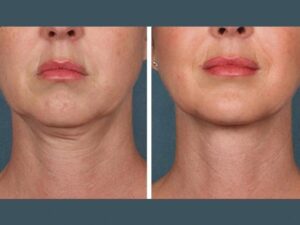Substance abuse is a pervasive issue affecting millions of individuals and families across the United States. In California, the challenges of addiction are particularly significant due to the state’s large population and diverse communities. Addiction is not simply a matter of weak willpower or poor choices—it is a complex medical condition that impacts brain function, behavior, and physical health. Fortunately, addiction abuse treatment in California offers hope, recovery, and a path toward a healthier, more fulfilling life.
What is Addiction?
Addiction is a chronic disorder characterized by compulsive substance use despite harmful consequences. Commonly abused substances include alcohol, prescription medications, opioids, and illicit drugs like cocaine or methamphetamine. Addiction affects more than the individual—it disrupts families, employment, and social networks. Over time, untreated substance abuse can lead to severe health problems, legal issues, and even death.
Understanding addiction as a medical condition is essential for effective treatment. Just like diabetes or heart disease, addiction requires professional care, ongoing support, and lifestyle changes to achieve long-term recovery.
The Need for Addiction Abuse Treatment in California
California has a wide range of resources for individuals struggling with addiction. The state recognizes that addiction is not a one-size-fits-all problem, and therefore, substance abuse treatment programs are designed to meet diverse needs. Whether someone is dealing with alcohol dependency, prescription drug misuse, or illicit drug addiction, tailored treatment programs are available.
The goals of addiction abuse treatment in California include:
- Detoxification: Safely managing withdrawal symptoms in a controlled environment.
- Therapy and Counseling: Addressing underlying psychological issues and developing coping strategies.
- Medication-Assisted Treatment (MAT): Using FDA-approved medications to reduce cravings and withdrawal symptoms.
- Aftercare Planning: Ensuring ongoing support to prevent relapse.
Types of Substance Abuse Treatment Programs
California offers a variety of substance abuse treatment programs, each designed to meet the specific needs of patients. Understanding the options can help individuals and families make informed decisions about care.
- Inpatient Rehabilitation Programs
Inpatient or residential treatment programs provide 24/7 care in a structured environment. These programs are ideal for individuals with severe addiction, co-occurring mental health conditions, or those who have failed outpatient treatment. Inpatient rehab allows patients to focus entirely on recovery, away from triggers and stressors in their daily lives.
- Outpatient Treatment Programs
Outpatient programs offer flexibility for individuals who cannot commit to residential treatment. Patients attend therapy sessions and medical appointments while continuing to live at home. Outpatient care is often recommended for those with mild to moderate addiction or as a step-down from inpatient care.
- Detoxification Programs
Detoxification, or detox, is the first step in many treatment plans. During detox, patients are medically monitored as their bodies rid themselves of harmful substances. Detox programs often include supportive care and medication to manage withdrawal symptoms safely.
- Intensive Outpatient Programs (IOP)
Intensive outpatient programs bridge the gap between inpatient and standard outpatient care. Patients participate in multiple therapy sessions per week while maintaining some aspects of daily life. IOPs focus on behavioral therapy, relapse prevention, and life skills development.
- Medication-Assisted Treatment (MAT)
MAT combines behavioral therapy with medications such as buprenorphine, methadone, or naltrexone. This approach is particularly effective for opioid and alcohol dependence, helping reduce cravings and improve treatment retention.
The Role of Therapy in Recovery
Therapy is a cornerstone of substance abuse treatment programs. Addiction often coexists with mental health disorders such as anxiety, depression, or PTSD. Addressing these conditions is crucial for successful recovery.
Common therapy methods include:
- Cognitive Behavioral Therapy (CBT): Helps patients recognize and change harmful thought patterns.
- Dialectical Behavior Therapy (DBT): Focuses on emotional regulation and coping skills.
- Family Therapy: Involves loved ones in the recovery process, strengthening support systems.
- Group Therapy: Provides peer support and reduces feelings of isolation.
Why Early Intervention Matters
Early intervention in addiction can significantly improve treatment outcomes. California emphasizes awareness campaigns and educational programs to help individuals recognize the signs of substance abuse. Early intervention not only prevents the progression of addiction but also reduces the likelihood of co-occurring health issues.
Finding the Right Addiction Abuse Treatment in California
Choosing the right addiction abuse treatment California program can be overwhelming due to the many options available. Here are key considerations:
- Accreditation and Licensing: Ensure the facility meets state and national standards.
- Treatment Approach: Look for programs that offer evidence-based therapies.
- Specialized Care: Some programs specialize in dual diagnosis, gender-specific treatment, or adolescent care.
- Aftercare Support: Long-term recovery often requires ongoing therapy, support groups, or sober living arrangements.
California offers resources such as the Department of Health Care Services (DHCS), which maintains a directory of licensed treatment facilities. Many organizations also provide guidance for insurance coverage, sliding scale fees, and financial assistance.
The Benefits of Substance Abuse Treatment Programs
Engaging in substance abuse treatment programs has numerous benefits:
- Improved Physical Health: Reduces risk of chronic illnesses, overdose, and infectious diseases.
- Enhanced Mental Well-being: Therapy addresses anxiety, depression, and other co-occurring disorders.
- Stronger Relationships: Family therapy and support groups strengthen social connections.
- Long-Term Recovery: Evidence-based programs reduce relapse rates and promote lasting sobriety.
Recovery is a journey, and each step taken through professional treatment programs brings individuals closer to reclaiming their lives from addiction.
Conclusion
Addiction is a challenging, yet treatable condition. California offers a wealth of options for those seeking addiction abuse treatment and substance abuse treatment programs tailored to their needs. From inpatient and outpatient care to detox programs and medication-assisted therapies, comprehensive treatment approaches are designed to promote healing, personal growth, and long-term recovery.
If you or a loved one is struggling with addiction, taking the first step toward professional treatment is crucial. With the right support, guidance, and resources, recovery is not only possible—it is within reach. California’s dedicated treatment programs provide hope and a pathway to a healthier, substance-free life.


